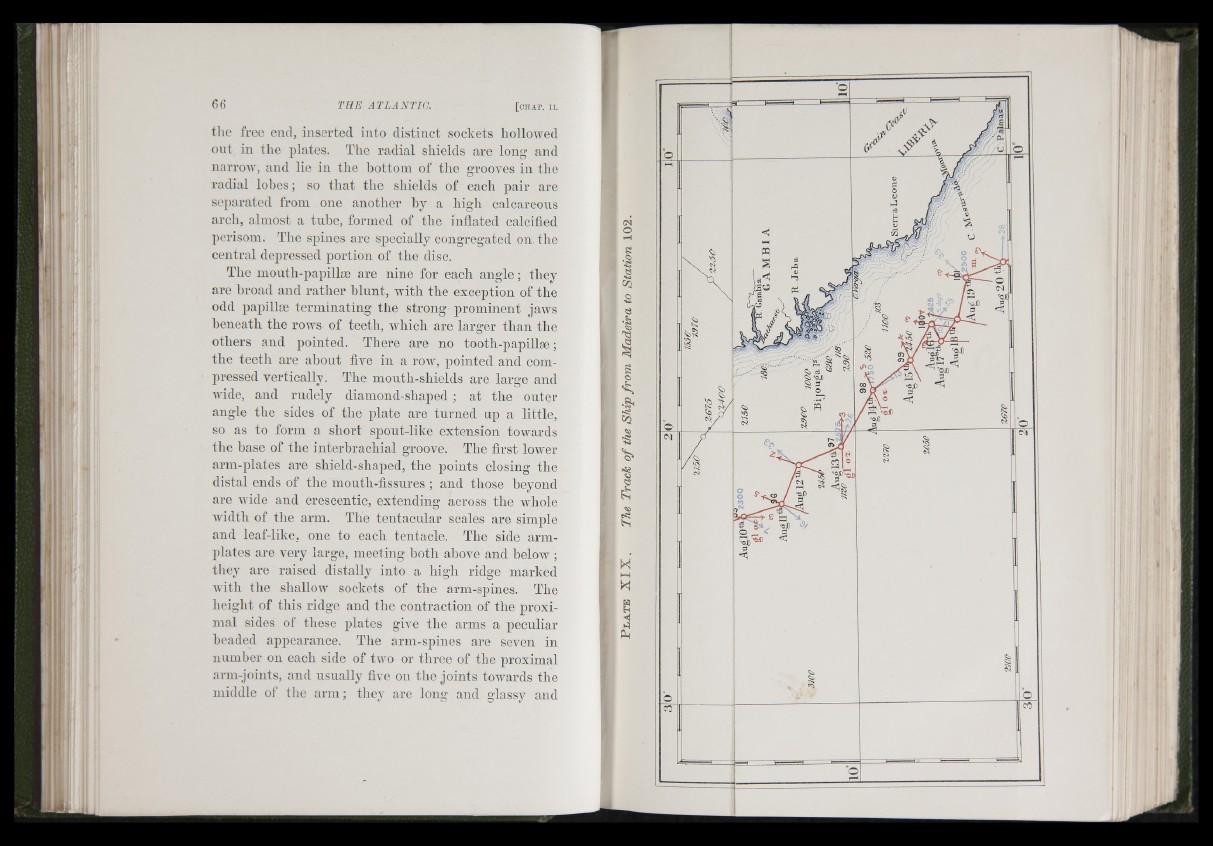
if*
66 T H E A T L A N T IC . [ c h a p . II.
the free end, inserted into distinct sockets hollowed
out in the plates. The radial shields are long and
narrow, and lie in the bottom of the grooves in the
radial lobes ; so th a t the shields of each pair are
separated from one another hy a high calcareous
arch, almost a tube, formed of tbe inflated calcified
perisom. The spines are specially congregated on. the
central depressed portion of the disc.
Tbe moutli-papillæ are nine for each angle; they
are hroad and rath e r blunt, with the exception of the
odd papillæ terminating the strong prominent jaAvs
beneath the roAvs of teeth, Avhich are larger th an the
others and pointed. There are no tooth-papillæ ;
the teeth are about five in a roAV, pointed and compressed
vertically. The mouth-shields are large and
Avide, and rudely diamond-shaped ; at the outer
angle the sides of the plate are turned up a little,
so as to form a short spout-like extension towards
the base of the interhrachial groove. The first lower
arm-plates are shield-shaped, the points closing the
distal ends of the mouth-fissures ; and those beyond
are Avide and crescentic, extending across the Avhole
AAddth of the arm. The tentacular scales are simple
and leaf-like, one to each tentacle. The side arm-
plates are very large, meeting both above and beloAv ;
they are raised distally into a high ridge marked
Avith the shalloAV sockets of the arm-spines. Tbe
height of this ridge and the contraction of the proximal
sides of these plates give the arms a peculiar
beaded apj)earance. The arm-spines are seven in
number on each side of tAvo or three of the proximal
arm-joints, and usually five on the joints toAvards the
middle of the arm ; thev are long and glassv and
< (ON
CO
I
I
I El> 'W